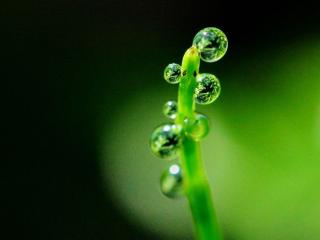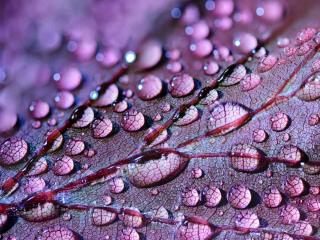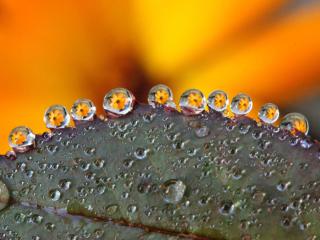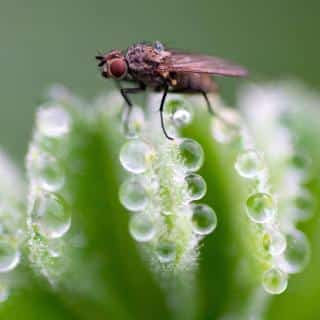

We’ve all seen those fabulous dewdrops, twinkling in the pale early morning sunlight. Did you know plants were behind the most beautiful ones? Delve into the secrets of guttation, one of the most amazing mysteries of the plant kingdom.
→ Read also:
In this post, we’ll describe what is inside those dewdrops that form along the edges of leaves, and whether they’re dangerous for us – and for the rest of nature!
Guttant is produced by the plant itself. It contains many things that are usually found in sap.
→ Here: on a horsetail stem (one of the most interesting in terms of nutrients)

It varies greatly a lot on the plant, growth stage, soil, weather, season, temperature, etc.

Dew results from water condensing from the air down onto leaves and stems. As such, it’s mostly chemically pure water. However, in some cases, it can carry small particles of matter and pollutants that were floating in the sky. This happens often in polluted areas, places where many wildfires occur, and also during pollen season.
Guttation will always be much more nutritious than pure dew. Good to know if you’re in survival mode!
Dewdrops usually form on the surface of leaves, on the topside.

It’ll also appear on leaves that are deeper down in the plant, even underneath it.
Dew, on the other hand, comes from the sky and falls down: it won’t gather on leaves that are lower down on the shrub. Leaves that are covered by other leaves or plants won’t have any dew on them, but they’ll still have guttation.
For a plant, guttation is usually a sign of good health. However, in some cases, guttation is sometimes bad for the plant.
For us humans, and pets or animals, it’s nearly impossible to contract illness, disease, or problems from drinking or brushing against guttation.
There is no known allergy to guttation fluid, except in cases where the plant itself induces allergies.

→ Some of the best shrubs for pollinators are also known to produce lots early-morning dew even during dry spells.
This is particularly dangerous for such insects when plants they drink from have been sprayed with pesticides and insecticides.
This proves how important it is to always refrain from using chemicals. It’s far better to use natural, home-made fertilizer and pest control instead.
Interesting fact: